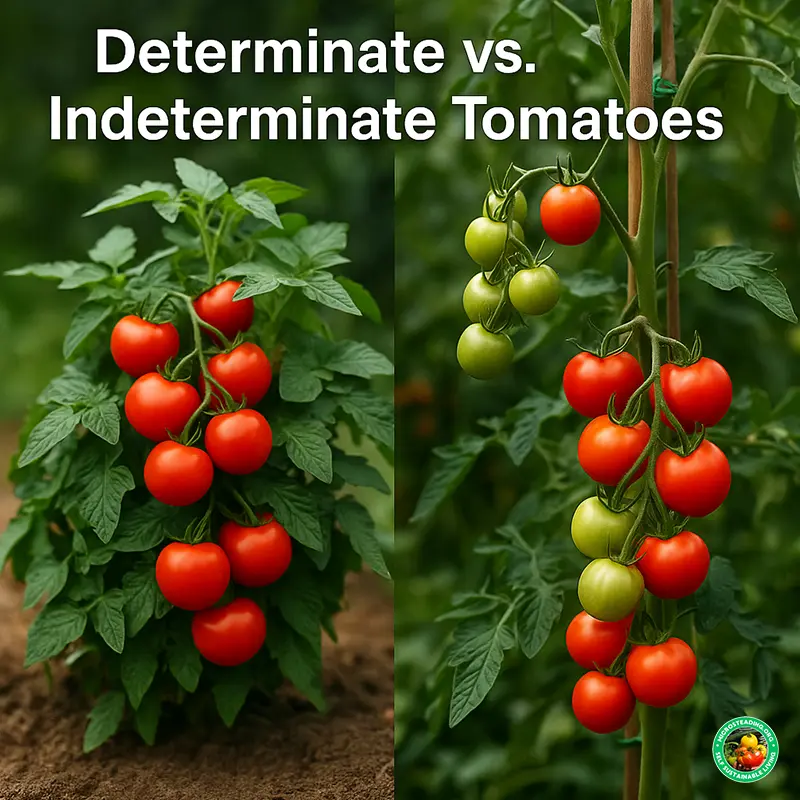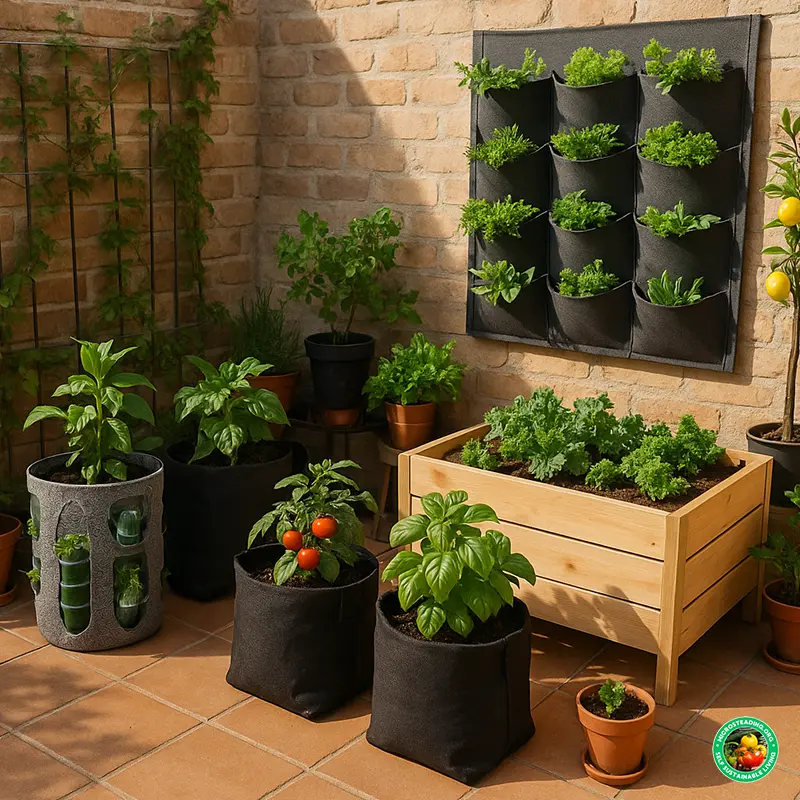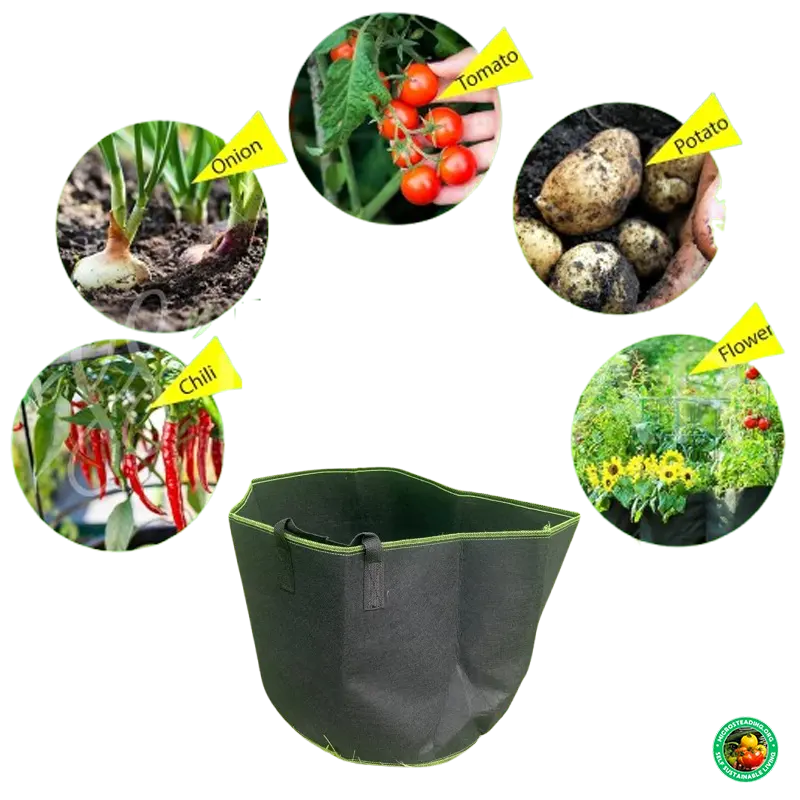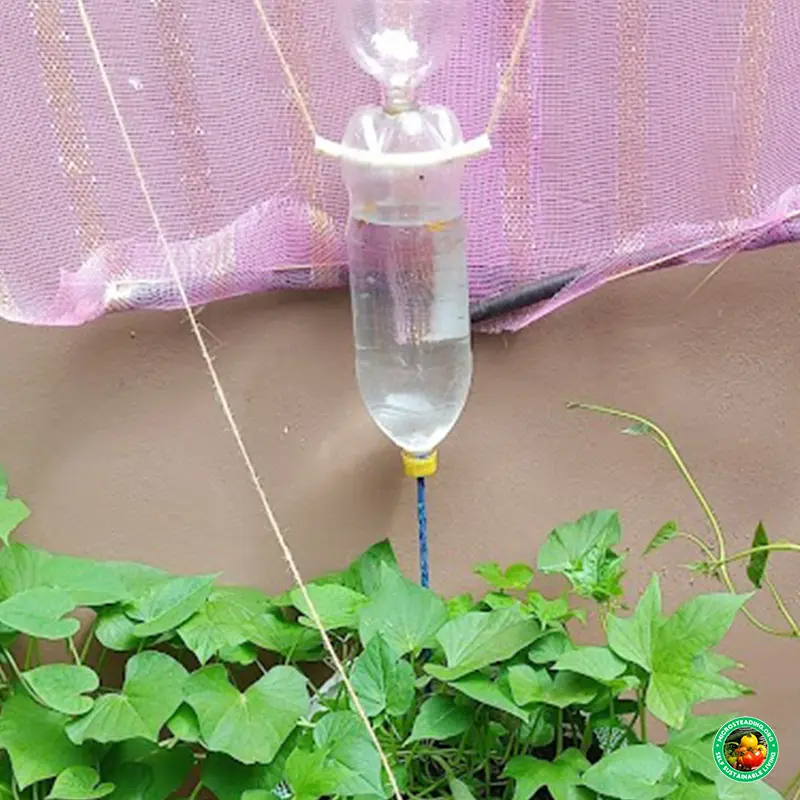💧 Efficient Watering Techniques for Grow Bags
When you use grow bags for planting, water is everything. Because grow bags are breathable and free-draining, they help prevent root rot, but they also dry out faster than traditional containers or garden beds. If you’re not watering efficiently, your plants can suffer from stress, stunted growth, or early bolting.
In this guide, we’ll show you how to keep your grow bags hydrated and healthy using smart techniques, tools, and timing—plus how to avoid common watering pitfalls that can ruin your harvest.
🪴 Why Grow Bags Dry Out Faster
Grow bags are typically made from porous fabric, which allows for excellent drainage and air pruning. This is great for root health, but it also means:
- 💨 Water evaporates quickly from the sides
- ☀️ Bags heat up faster in the sun
- 💧 Frequent watering is often necessary—especially in warm weather
That’s why a proper watering strategy is essential, particularly for moisture-sensitive crops like lettuce, herbs, and fruiting vegetables.
🚿 3 Watering Methods That Work
1. Manual Watering
The most common method. Use a watering can or hose with a soft spray nozzle. Water deeply until it drains out the bottom. Check soil daily—especially in summer.
- ✅ Simple and flexible
- ⚠️ Easy to over- or under-water if not consistent
2. Drip Irrigation
A slow-drip system delivers water directly to the base of each plant. Use a timer for consistency and connect to a gravity-fed reservoir or hose system.
- ✅ Ideal for hot climates and busy growers
- ✅ Conserves water by targeting roots
- ⚠️ Initial setup required
3. Self-Watering Inserts
Insert a BottleCore™ or similar device to wick water upward from a hidden reservoir. Great for leafy greens, herbs, and weekend travelers.
- ✅ Reduces daily watering needs
- ✅ Helps prevent bolting from moisture stress
- ⚠️ Not suitable for very large bags unless paired with a tray
👉 Want to DIY your own wicking system? Check out our Wicking Systems Guide for step-by-step builds.
🥬 Why Your Lettuce Might Be Bolting
If your lettuce suddenly shoots up and sends out a central flower stalk, it’s bolting—a response to stress that turns tender greens bitter and unharvestable.
Here’s a real example from our garden:

In this case, a small container combined with fast-draining soil caused the romaine to dry out quickly. The result? The plant bolted early—even though it was still healthy and green. This is why watering (and container size) matters.
✅ Tips to Prevent Bolting
- Use 5–7 gallon bags minimum for leafy greens
- Mulch the surface with straw, leaves, or coconut husk
- Water daily or use a self-watering insert
- Add shade cloth in hot weather
🌤️ Should You Use Shade Covers?
Yes—especially for heat-sensitive crops like lettuce, cilantro, and spinach. In warm regions or mid-summer, temperatures inside a black grow bag can spike quickly, stressing roots and accelerating moisture loss.
Download The Quickstart Guide
- 🧺 Drape a light shade cloth (30–40% shade) over the frame or stakes
- ⛱️ Move bags to partial shade during the hottest part of the day
- 🏙️ Use nearby plants or structures to cast filtered light
🌱 Bolt-Resistant Varieties to Try
Some greens are bred to withstand heat and stress without bolting. If you’re growing in containers or a warm climate, look for these names:
- 🥬 ‘Sparx’ Romaine – Great bolt resistance and crisp texture
- 🥬 ‘Buttercrunch’ Lettuce – Compact and forgiving in heat
- 🥬 ‘Parris Island Cos’ – Classic Romaine with better tolerance
- 🌿 ‘Slow Bolt’ Cilantro – Lasts longer before flowering
- 🌿 ‘Bloomsdale’ Spinach – More tolerant of heat spikes
Look for “slow bolt” or “heat tolerant” on seed packets and catalogs to make grow bag success easier.
🧱 Don’t Forget the Soil
Moisture retention starts from the bottom up. Use a soil mix rich in:
- 🥥 Coco coir or peat moss (holds water)
- 🪱 Compost (retains nutrients and moisture)
- 💎 Perlite or vermiculite (balance drainage)
🧮 Need help customizing your mix? Use our Soil Mix Calculator to plan the perfect blend by bag size and plant type.
📦 Add Trays to Extend Moisture
Another underrated hack? Place your grow bag on a shallow tray, saucer, or even a plastic tote lid. It catches excess water and allows the bag to reabsorb it slowly from below. This works especially well with thirsty crops like tomatoes, cucumbers, and greens.
🪴 Grow Bag Watering Checklist
- ✅ Water deeply and consistently (daily in summer)
- ✅ Use self-watering inserts or trays where possible
- ✅ Mulch to slow evaporation
- ✅ Choose bolt-resistant crops for hot climates
- ✅ Shade sensitive plants during peak heat
🚀 Keep Your Grow Bags Hydrated and Happy
Watering isn’t just a task—it’s a strategy. With the right soil, the right tools, and a little observation, you can prevent heat stress, keep your harvest sweet, and grow better results in every bag.
💧 Want more tips? Explore our full Grow Bag Gardening Guide or try the Sunlight Exposure Estimator to better plan your container layout.
Frequently Asked Questions
During warm months, most grow bags need to be watered daily—especially leafy greens and shallow-rooted crops. In cooler weather or with self-watering inserts, every 2–3 days may be enough. Always check soil moisture with your finger.
Grow bags are made of breathable fabric that promotes air pruning—but this also means faster evaporation. Pairing your grow bags with mulch, saucers, or self-watering inserts can slow down drying time.
Keep your lettuce consistently moist, use bags that are at least 5–7 gallons in size, provide partial shade in hot weather, and consider growing bolt-resistant varieties like ‘Sparx’ or ‘Buttercrunch’.
Yes! Self-watering inserts like BottleCore™ are great for medium-sized grow bags. For larger containers, pair with a drip tray or gravity-fed system to extend hydration between manual waterings.
Yes. It's normal for excess water to drain from grow bags. This ensures roots don’t sit in soggy conditions. If the water drains immediately and your plant wilts quickly, your mix may be too dry or sandy—consider adding compost or coco coir.
Yes. Tomatoes and fruiting plants need deeper, less frequent soaking. Leafy greens like lettuce prefer frequent, consistent moisture. Herbs like thyme or rosemary can tolerate drier conditions, so avoid overwatering them.

 Subscribe on Substack
Subscribe on Substack







